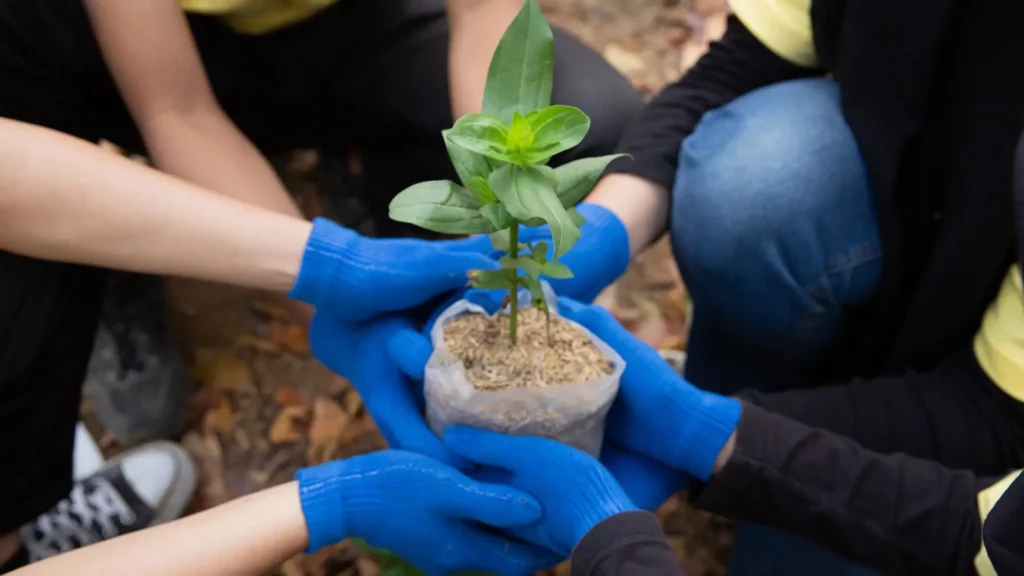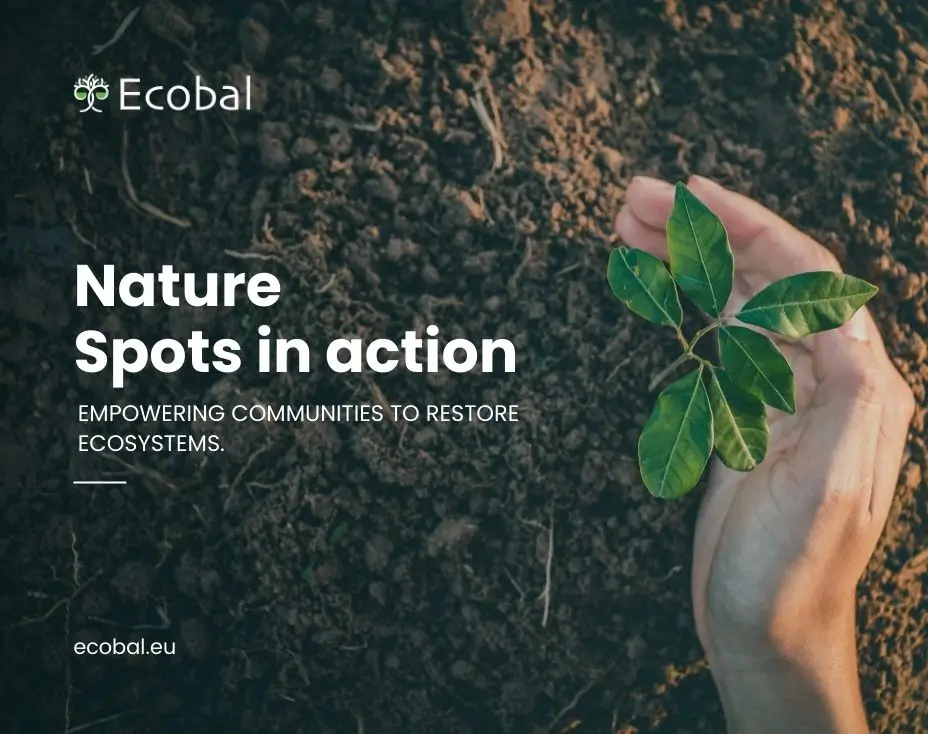Nature Spots in Action: How Ecobal Supports Community-Led Ecosystem Restoration
Ecosystem restoration has become a critical global priority in the face of climate change, biodiversity loss, and land degradation. Community-led initiatives have emerged as powerful tools for restoring ecosystems, as they empower local populations to take ownership of environmental conservation efforts. Ecobal, a pioneering organization, has been at the forefront of supporting such initiatives through its innovative “Nature Spots” program.
Community-led ecosystem restoration is gaining recognition as a sustainable and inclusive approach to addressing environmental challenges. According to the United Nations Decade on Ecosystem Restoration (2021–2030), local communities play a vital role in achieving global restoration targets. Studies have shown that community-driven projects are more likely to succeed in the long term because they align with local needs, traditions, and knowledge systems. For example, a 2020 report by the World Resources Institute (WRI) highlighted that community-managed forests in Latin America and Africa exhibit higher biodiversity and carbon storage levels compared to state-managed or privately owned forests.
Ecobal’s “Nature Spots” initiative builds on this principle by providing communities with the tools, resources, and scientific support needed to restore degraded ecosystems. By focusing on local participation, Ecobal ensures that restoration efforts are not only ecologically effective but also socially and economically beneficial.

How Ecobal’s Nature Spots Work
Ecobal’s “Nature Spots” program is a technology-driven initiative that connects communities, scientists, and policymakers to facilitate ecosystem restoration. The program operates through the following key steps:
Identification of Degraded Areas: Ecobal uses cutting-edge technology to identify degraded ecosystems suitable for restoration. These areas, termed “Nature Spots,” are selected based on factors such as biodiversity potential, carbon sequestration capacity, and community interest.
Community Engagement and Training: Once a Nature Spot is identified, Ecobal collaborates with local communities to develop restoration plans. This includes training community members in sustainable land management practices, such as reforestation and soil carbon management. Ecobal also provides access to a network of scientists and experts who offer guidance on species selection, planting techniques, and monitoring.
Implementation and Monitoring: Ecobal currently manages 155 hectares of Nature Spots across the EU, which store 1,581 tons of CO2 and release approximately 1,150 tons of oxygen annually while conserving natural habitats.
Scaling Up and Replication: Successful Nature Spots serve as models for replication in other regions. By 2027, Ecobal aims to expand its forest land holdings to 500 hectares and increase its current carbon sequestration capacity from 1,550 tons of CO2 per year to 7,000 tons. The platform enables communities to share their experiences and best practices, fostering a global network of restoration initiatives.
Impact of Ecobal’s Nature Spots on Ecosystems and Communities
The impact of Ecobal’s Nature Spots program can be measured in terms of ecological, social, and economic outcomes:
Ecological Benefits: Restoration efforts under the Nature Spots program have led to significant improvements in biodiversity and ecosystem services.
Carbon Sequestration: Ecosystem restoration is a powerful tool for mitigating climate change. According to a 2021 study published in Nature, restoring 15% of converted lands in priority areas could sequester 299 gigatons of CO2, equivalent to 30% of the total atmospheric carbon increase since the Industrial Revolution. Ecobal’s Nature Spots contribute to this global effort by focusing on high-impact restoration projects.
Community Empowerment: By providing training for local communities in restoration activities, Ecobal fosters a sense of ownership and responsibility.
Challenges and Future Directions
While Ecobal’s Nature Spots program has achieved notable success, it faces several challenges, including securing long-term funding and addressing land tenure issues. To overcome these challenges, Ecobal is exploring partnerships with governments, NGOs, and private sector actors.
Looking ahead, Ecobal aims to expand its reach by leveraging emerging technologies such as artificial intelligence (AI) and blockchain. AI can improve the accuracy of ecosystem monitoring, while blockchain can enhance transparency in CO2 trading. By integrating these technologies, Ecobal hopes to create a more efficient and scalable model for community-led ecosystem restoration.
𝐄𝐜𝐨𝐛𝐚𝐥’𝐬 𝐌𝐢𝐬𝐬𝐢𝐨𝐧:
- Raise awareness and establish authority to certify the ecological health and capacity of rural and natural landscapes.
- Monetize ecosystem services to demonstrate the economic value of nature.
- Use natural ecosystems as efficient carbon sinks for CH4 and CO2 sequestration and biodiversity conservation.
- Turning CO2 and CH4 from a challenge into a valuable and tradable commodity.
- Manage soil microbiota and fauna to improve soil health and ecosystem functionality.
- Restoring biodiversity through the reintroduction and conservation of native species.
In conclusion, by combining technology, scientific expertise, and local knowledge, Ecobal is not only restoring degraded ecosystems but also empowering communities to become stewards of their environment. As the world grapples with the twin crises of climate change and biodiversity loss, programs like Nature Spots offer a promising pathway toward a more sustainable and resilient future.
About the Author This article is written by Dr. Amisalu Milkias, Ecologist and Biodiversity Expert. Dr. Milkias is dedicated to researching and promoting innovative strategies for environmental restoration, sustainable land use, and nature-based solutions for climate resilience.


